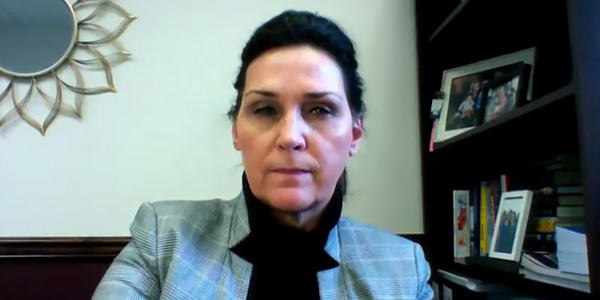A resolution that would express the Nevada legislature’s support for protecting 30% of the state’s lands and waters by 2030 had its first committee hearing on Wednesday.
Assembly Joint Resolution 3 (AJR3) was heard by the Assembly Natural Resources Committee. Committee members asked questions and accepted comments but did not vote on the resolution.
If approved by the legislature, the resolution would urge state and local governments to work with federal agencies to reach a target of protecting 30% of lands and waters in the state by 2030, a goal often referred to as “30-by-30.”
The resolution would also urge local agencies to encourage private landowners to voluntarily participate in land conservation programs.
Reaching the 30-by-30 target would benefit wildlife and help the state meet its greenhouse gas reduction goals, the resolution states.
“Land conservation and restoration increases natural carbon sequestration and is one of the most cost effective solutions to combating climate change,” AJR3 says.
But some committee members wondered whether the resolution should be more specific.
“What does ‘protect’ actually mean?” asked Assemblymember Alexis Hansen (R). “Are we allowed to drive our four-wheeler on it? Are we allowed to camp on it? Are we allowed to graze our cattle on it?”
Christi Cabrera, policy and advocacy director for the Nevada Conservation League, told the committee that different levels of protection could apply to different areas in the state. For example, she said, some levels of protection might allow people to drive vehicles on the land, while other levels would not.
“That’s really the point of this resolution … to start that conversation,” Cabrera said. “Bring stakeholders together and come up with a plan of what can be protected in our state, where those areas are [and] what kind of designations should we be considering.”
Cabrera and the bill’s primary sponsor, Assemblymember Cecelia González (D) presented AJR3 to the committee. The resolution’s joint sponsor is Sen. Fabian Donate (D).
Assemblymember Jim Wheeler (D) wanted to know how the protections called for in the resolution might impact water rights. Cabrera said she didn’t know but would research the issue.
Conservation and business groups submitted a letter in support of AJR3. Among the 18 people who signed the letter were representatives of the Nevada Wildlife Federation, the Nature Conservancy, Patagonia and the Nevada Outdoor Business Coalition.
“A statewide 30-by-30 initiative can position Nevada as a leader in conservation,” the letter said. “Not to mention, conserving lands will help support a booming recreation economy that already contributes significantly to our state’s revenue, boosts local businesses and creates jobs.”
Opponents of AJR3 include a group called Nevada Families for Freedom, which said the resolution does not take into consideration grazing and mineral rights on federal land in the state.
“In addition, almost all the water in Nevada already has legal water rights attached, and there is no water for this outlandish resolution to lock up,” the group said in a letter.
If approved, the resolution would be sent to federal officials including President Biden and Nevada’s Congressional delegation, as well as Nevada Gov. Steve Sisolak and the state Department of Conservation and Natural Resources.
The goal of protecting at least 30% of U.S. lands and ocean by 2030 is part of an international conservation movement. In addition to backing from environmental groups, the 30-by-30 initiative is gaining support from politicians.
California Gov. Gavin Newsom in October issued an executive order setting what his office called a first-in-the-nation goal to conserve 30% of the state’s land and coastal water by 2030 to fight species loss and ecosystem destruction.
Seventy mayors from 29 states and the District of Columbia signed a letter supporting the 30-by-30 initiative, the League of Conservation Voters reported.
Biden has already indicated his support for a 30-by-30 initiative. In a Jan. 27 executive order, he directed the Interior Secretary to come up with recommendations on how the U.S. could meet a 30-by-30 target.




